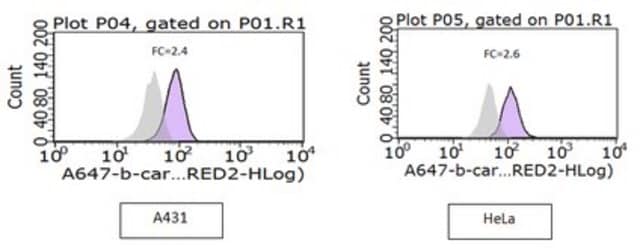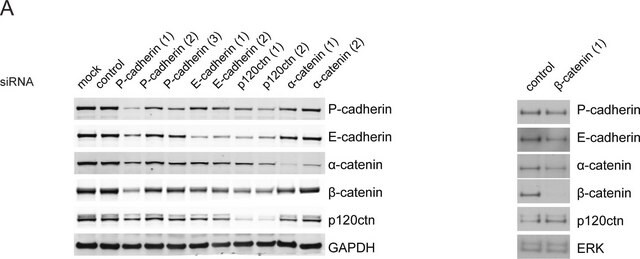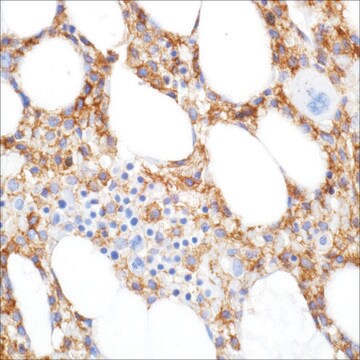05-665-AF555
Anti-Active-β-Catenin Antibody, clone 8E7, Alexa Fluor™ 555
clone 8E7, from mouse, ALEXA FLUOR™ 555
Sinónimos:
Catenin beta-1, Beta-catenin, Active-β-Catenin
About This Item
Productos recomendados
origen biológico
mouse
Nivel de calidad
conjugado
ALEXA FLUOR™ 555
forma del anticuerpo
purified antibody
tipo de anticuerpo
primary antibodies
clon
8E7, monoclonal
reactividad de especies
human, mouse
reactividad de especies (predicha por homología)
rat (based on 100% sequence homology), zebrafish (based on 100% sequence homology)
técnicas
immunocytochemistry: suitable
immunohistochemistry: suitable
isotipo
IgG1κ
Nº de acceso NCBI
Nº de acceso UniProt
Condiciones de envío
wet ice
modificación del objetivo postraduccional
unmodified
Información sobre el gen
human ... CTNNB1(1499)
mouse ... Ctnnb1(12387)
rat ... Ctnnb1(84353)
zebrafish ... Ctnnb1(30265)
Descripción general
Especificidad
Inmunógeno
Aplicación
Immunohistochemistry Analysis: A 1:50 dilution from a representative lot detected Active-β-Catenin in human colon and human colorectal adenocarcinoma tissue.
The unconjugated version (Cat. No. 05-665) has been shown to work in WB, FC, ICC, IHC, IH(P).
Cell Structure
Adhesion (CAMs)
Calidad
Immunocytochemistry Analysis: A 1:100 dilution of this antibody detected Active-β-Catenin in HeLa cells.
Descripción de destino
Forma física
Almacenamiento y estabilidad
Otras notas
Información legal
Cláusula de descargo de responsabilidad
Not finding the right product?
Try our Herramienta de selección de productos.
Código de clase de almacenamiento
10 - Combustible liquids
Clase de riesgo para el agua (WGK)
WGK 2
Punto de inflamabilidad (°F)
Not applicable
Punto de inflamabilidad (°C)
Not applicable
Certificados de análisis (COA)
Busque Certificados de análisis (COA) introduciendo el número de lote del producto. Los números de lote se encuentran en la etiqueta del producto después de las palabras «Lot» o «Batch»
¿Ya tiene este producto?
Encuentre la documentación para los productos que ha comprado recientemente en la Biblioteca de documentos.
Nuestro equipo de científicos tiene experiencia en todas las áreas de investigación: Ciencias de la vida, Ciencia de los materiales, Síntesis química, Cromatografía, Analítica y muchas otras.
Póngase en contacto con el Servicio técnico








